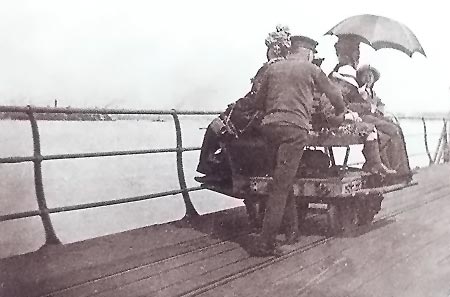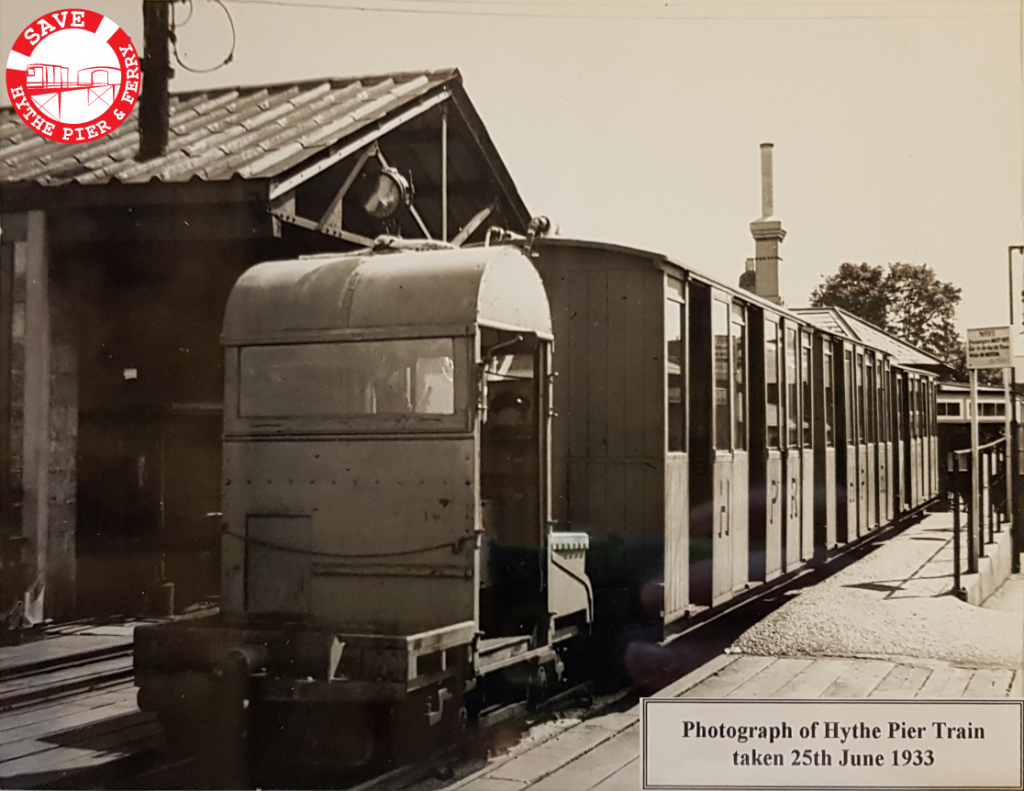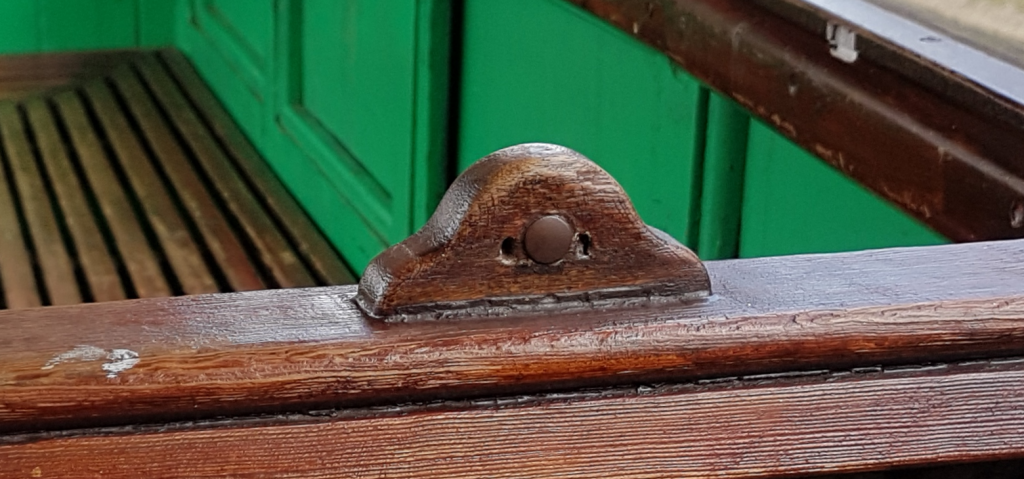The Train Heritage
The pier plans made provision for the construction of a tramway, although one was not laid until 1909. The early trucks that carried luggage along the pier were found to be damaging the pier decking, and so a flush narrow gauge railway was constructed to replace them. The vehicles were hand-propelled, and the track was laid flush with the pier decking on the northern side. In 1922 the tramway was upgraded to a 2ft narrow gauge 3 rail electrified track on the southern side of the pier.

Three four-wheeled electric locomotives built in 1917 by Brush Traction
were put into service on the pier in 1922 having been originally built
for the Avonmouth mustard gas factory in 1917. Engines 16302 & 16307
were rather confusingly renumbered as Engine No.2 & No.1, while the
3rd (16304) was broken down for spares. They were originally battery
powered, but were converted to operate from 240VDC provided by a 3rd
rail on the pier.
The line owns four bogie passenger cars, two of which have a driving cab at their seaward ends. In normal operation the single train is made up of one of the locomotives propelling three passenger cars, with a four-wheel flat car for baggage. The locomotive is always at the landward end, and the seaward passenger car must have a driving cab. The line also has a four-wheel oil-tank car, used to carry fuel to the Hythe ferries.

Hythe Pier Train has been confirmed by the Guinness Book of Records as the “oldest continually running pier train in the world”. It’s also possibly the last train in the UK carrying both passengers and freight at the same time!

Did you know: There have been many visitors to the pier over the years, but a small wooden ‘bump’ in one carriage marks the visit by King George VI on 24th May 1944. Unfortunately the associated brass work has been lost, but the wooden stand remains – “King George VI sat here” is pretty much all we can say.
